Art director Alina Fedaseyenka says making Synapse was "an artistic sweet spot"
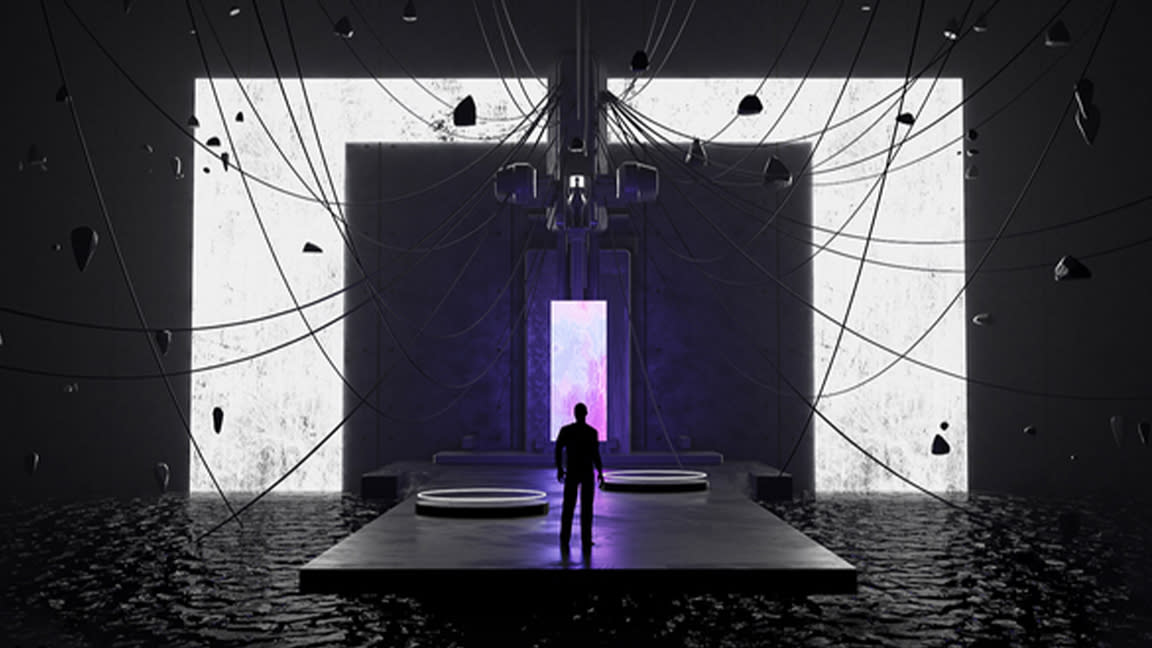
- Oops!Something went wrong.Please try again later.
Synapse is one of the most striking and beautifully art-directed VR games in recent years. Released exclusively for PSVR 2 it features a clean monochromatic art style that reduces texture and tone to a minimum, so why does it make a virtual space feel so real when colour is removed? I caught up with nDreams' associate art director, Alina Fedaseyenka, to find out.
You can read my Synapse review to find out more about this game, and read my PSVR 2 review to discover why Sony's next impresses. Both what's clear is we are at the start of a new burgeoning renaissance in VR tech, with Meta Quest 3 releasing and the forthcoming Apple Vision Pro poised to impress.
By pairing back colour Synapse was a revelation at launch. Its unique monochromatic art style is something truly original. I jumped at the chance to speak to the game's associate art director, Alina Fedaseyenka, to find out more about how this artistic marvel was made.
Creating the art of Synapse

"At the inception of our project," Fedaseyenka begins, "we had lots of great ideas swirling around." She tells me Synapse was conceived as an opportunity to push a new uncharted artistic vision for VR, "one that offered us a great chance to explore something that wasn't explored before".
The bold decision to adopt a monochromatic palette, punctuated by dashes of colour, was at odds with the trend for VR games to be 'realistic', especially from a game launching on new hardware. While this choice might have initially appeared unconventional for a VR video game, it received a warm embrace from both nDreams and Sony.
Synapse allowed us to showcase some of the best features that PlayStation VR 2 has
Synapse was more than just an artistic experiment; it also served as a promotion of the capabilities of PlayStation VR 2. Fedaseyenka elaborates, "It allowed us to showcase some of the best features that PlayStation VR 2 has." These features include HDR, which enhances the range of contrast and makes the monochromatic world feel vibrant and nuanced. "On any other platform, it would just look black and white," Fedaseyenka points out, highlighting the power of PlayStation VR 2.
The increased display resolution was another critical element that allowed the team to showcase their work. "One of the key objectives for us, especially in the beginning of the project, was to find a way of making the world more relatable and almost tactile," says Fedaseyenka.
The team aimed to make the environment so immersive that players would want to reach out and touch it. Synapse was made possible by enhanced performance, maintaining a steady 90 frames per second, a necessity in VR to prevent motion sickness. Having played Synapse, the sense of immersion impresses, despite the world being a dreamlike black and white space.
Pioneering ray tracing in VR
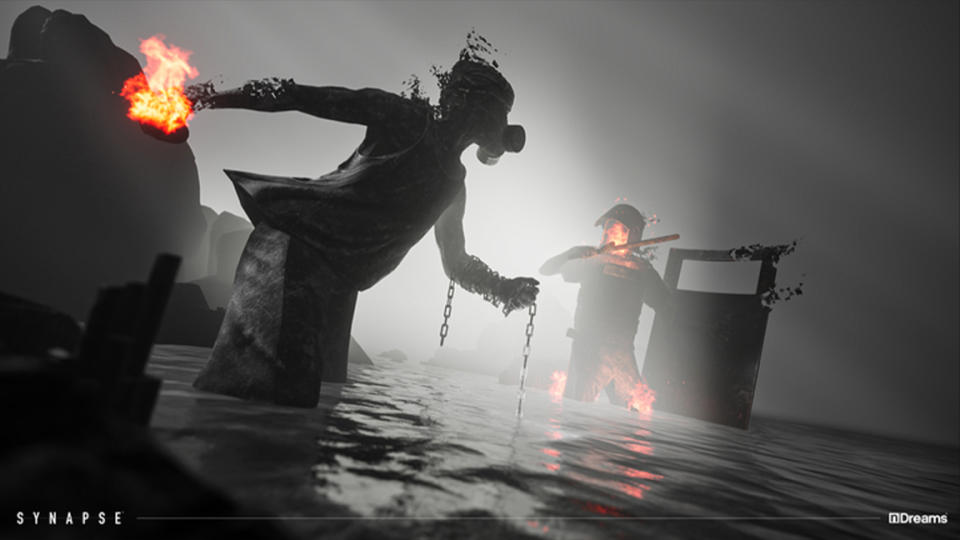
The technical ambitions of Synapse extended to pioneering the use of ray tracing. "We were the first team to use ray tracing in our project," Fedaseyenka states proudly. The absence of dynamic lights further adds to the challenge, as she shares, "We aimed to explore something challenging from both a creative and technical point of view."
Despite these challenges, Fedaseyenka emphasises the passion and dedication of the development team. "We were confident we could pull it off," she says, "even though we have quite a small team."
That 'small team' has a lot of experience in creating fantastic VR games; nDreams is the studio behind PowerWash Simulator VR, Fracked and the forthcoming Ghostbusters: Rise of the Ghost Lord. "Everybody's stupid, talented and super passionate," Fedaseyenka says, underscoring the ambition of this small developer. The team's efforts were met with ample support from Sony, a factor that motivated them to explore the abstract, surreal world of Synapse even further.
Achieving a unique artistic 'sweet spot'
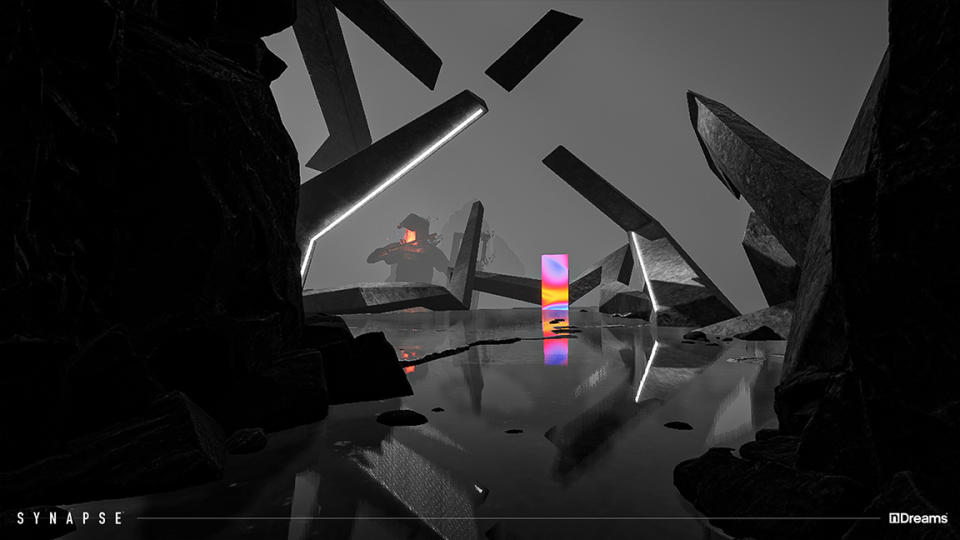
Balancing artistic ambition with technical constraints is a challenging feat, but one that Fedaseyenka and her team tackled head-on. "You start with an amazing art style," she explains, "and then see how you can adapt it to all the technical constraints and team size."
The team aimed for Triple-A quality, even with limited resources, and Fedaseyenka believes they found a "sweet spot" in their approach. It had the advantage of "shifting the players attention away from colour and towards what we actually had in the game," says Fedaseyenka, as she lists the "meshes, the materials, the VFX, and it made it look next-gen immediately because it was so sleek and stylised rather that realistic".
Creating the transition between the monochromatic real world and the subconscious world (the game plays out in the mind of a captured military general) was a complex and deliberate process. "The hardest part was to think of a separate art style for the real world," Fedaseyenka says, because she explains both worlds need to feel a part of a cohesive universe.
This stylisation had to be unique and specific. The time of day was meticulously chosen to invoke a sense of dreaminess and tension, creating a contrast that left players with mixed feelings as they left a warm beach-front condo for the cold, colourless world of Synapse.
Starting on a serene beach and ending up next to a "noisy machine" with human attachments was intentionally designed to be both engaging and unsettling. "We didn't want to make it super colourful," Fedaseyenka notes, emphasising the importance of maintaining a consistent art style.
The artistic inspirations of Synapse
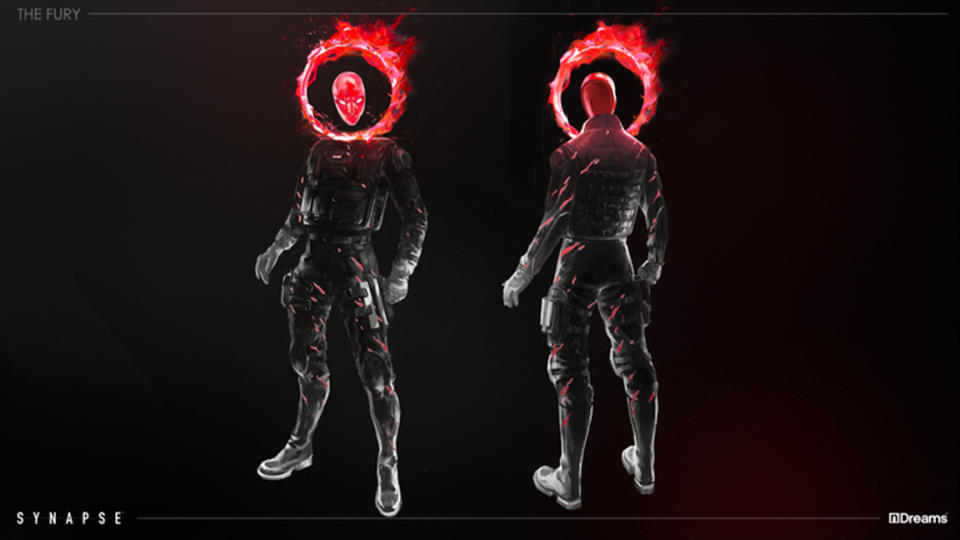
The artistic direction of Synapse draws inspiration from a wide array of sources, transcending the boundaries of traditional video game references. Fedaseyenka's research brought together photography, architecture, graphic design, product design, and even elements of theatre design to craft the game's VR spaces.
In one painting she studied, "I came across these sleek portals against vast desert landscapes," she recalls, "there was something so mesmerising about the juxtaposition of vibrant technology set against empty space or dead space."
The team's main objective was to create a world that was genuinely unique and had never been seen before. Instead of drawing from existing video game tropes, they sought inspiration from all areas of creativity.
Developing a new frontier in VR
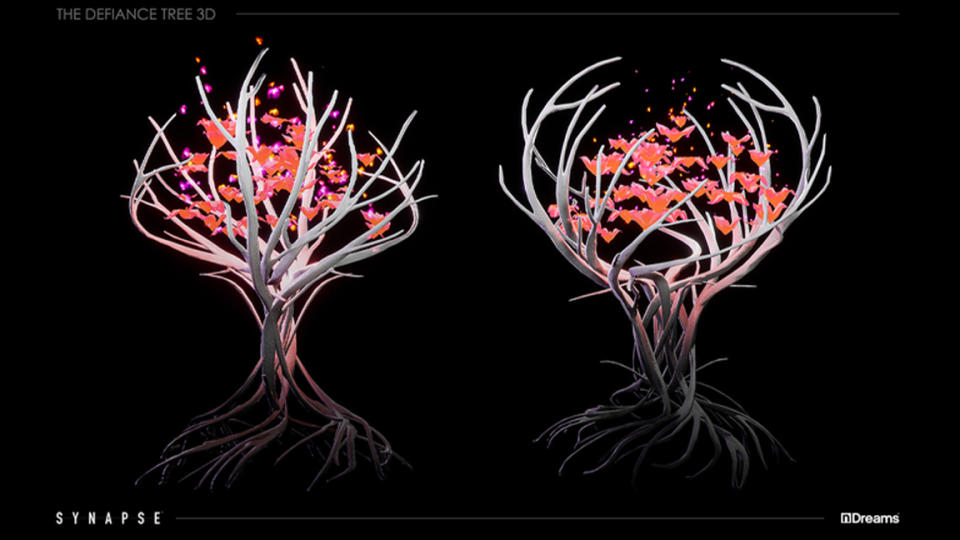
Fedaseyenka is enthusiastic about the opportunities VR presents. "I feel like we are inventing something new," she asserts, emphasising the uncharted territory that VR video gaming offers.
Speaking with Fedaseyenka and discovering her passion for VR development it clear shen believes the immersive nature of VR is enabling developers and artists to craft experiences that wouldn't be possible in traditional flat-screen games. The absence of set expectations in VR gaming gives room for innovation, enabling developers like nDreams to experiment where flat-screen teams may need to adhere to set rules.
The introduction of advanced hardware like PlayStation VR 2 has pushed VR gaming to a new level. Fedaseyenka underscores how these improvements have brought VR graphics closer to that of PC and console games, enhancing immersion.
She tells me she is excited about the ongoing development of major game engines, such as Unreal Engine 5, to further support VR. These new tools and platforms are making development for VR, and the need to experiment, much easier.
Creating UI in VR for Synapse
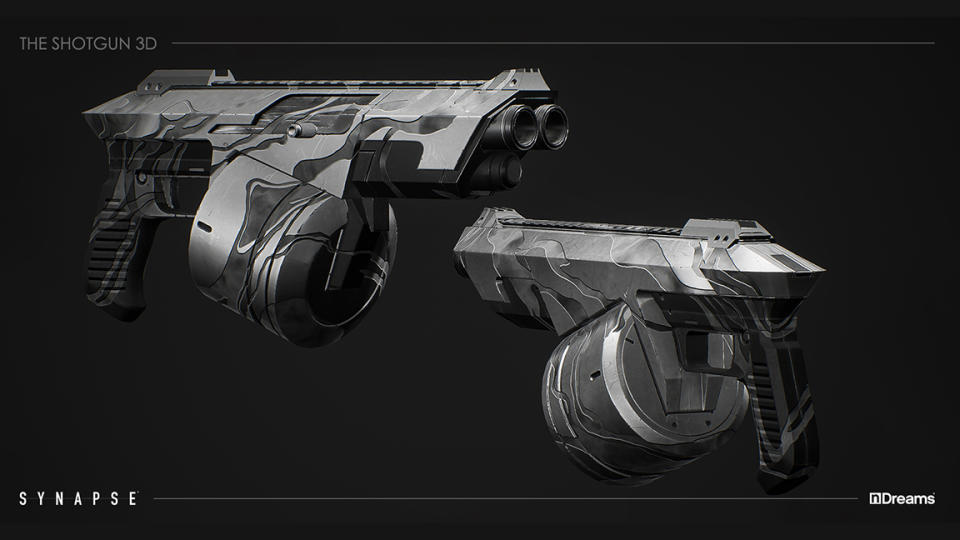
While my time with Fedaseyenka focuses on art direction and creating the style and world of Synapse, she shares the importance of creative UI design in VR games. "For a fast-paced shooter like Synapse, it was essential to make sure the player knows what they're doing," she explains, highlighting that crafting a sense of immersion in a virtual space needs new rules on how the UI is designed.
Fedaseyenka tells me the approaches to designing UI design for games don't apply when working on VR games. The absence of corners and edges of a screen in a 3D space required innovative solutions, the player is literally standing in the game's world and can look anywhere at any time.
Fedaseyenka highlights the creation of a dynamic compass as one of Synapse's clever UI designs as something she's most proud of; in the game the compass is positioned under the players wrist, you turn your hand to view where enemies are, where danger is coming from and unique points of interest. It's a very physical action to see what flat-screen games simply position into corners of the screen.
It comes back to the need for immersion. In a standard game "you have to craft the experience that the player will be able to feel fully immersed within," but in VR "it has to be all done in the game," confers Fedaseyenka.
What's the future of VR?
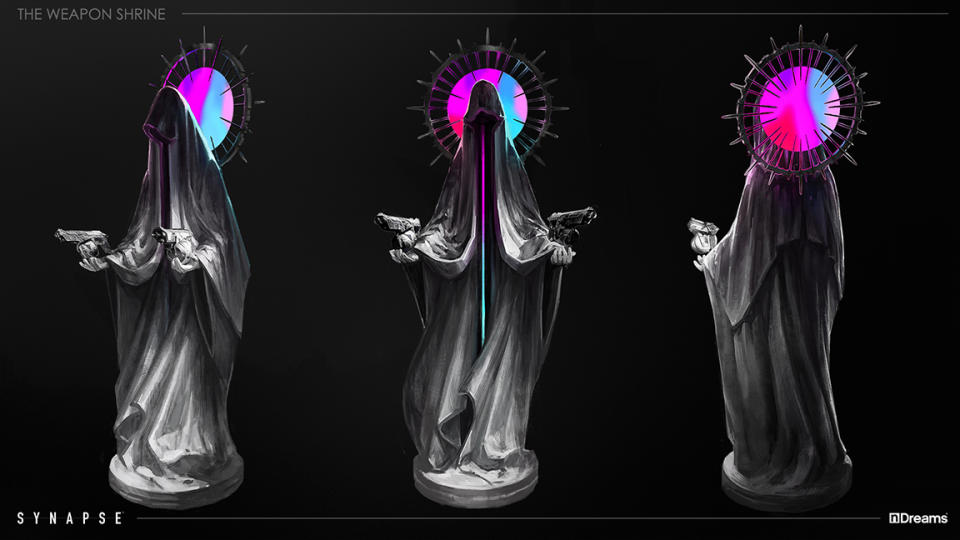
The future of VR gaming looks promising, but there's still room for growth and improvement. "I don't think it's quite there yet," Fedaseyenka reflects, acknowledging that VR is still in its infancy. As technology evolves and hardware becomes more powerful, the potential for VR gaming will continue to expand. Fedaseyenka looks forward to the day when VR gaming reaches its full potential.
Synapse has set a new standard for what's possible in VR gaming, offering a bold visual design and immersive experience that has captivated players with its innovative approach. For developers, creating for VR still means working on a different pipeline to standard flat-screen gaming, but Fedaseyenka believes as technology advances "we'll get there" and be able to create both types of games using the same, or similar, workflows.
As VR gaming continues to evolve, expect more interesting games like Synapse that challenge our perceptions of both art and gaming. Synapse is not only a testament to what has been achieved in VR but a glimpse into the exciting future that awaits.
If you want to get into video game art and design, read our feature on the best game art books for inspiration or our advice article on 7 tips for getting into the game art industry (it's old but timeless advice). Take a look at our collection of Procreate tutorials and Blender workshops to motivate you to start creating.

